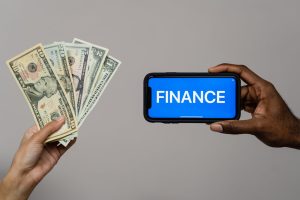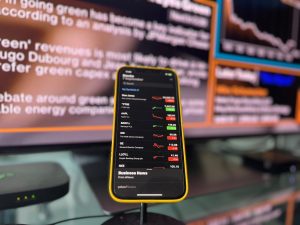Buy Now, Pay Later (BNPL) has rapidly and comprehensively swept the UK financial landscape. From being a simple way to split payments online, it has evolved into an entire financial services platform that is disrupting credit cards and transforming consumer spending.Millions of consumers in the UK are being served by BNPL providers such as Klarna, Clearpay, Laybuy, and Zilch. This shift is not only changing consumer behaviour but also impacting credit card companies, as they face competition from these new, more flexible payment options.These websites find their allure among cost-conscious, tech-savvy consumers through interest-free lending and simple payment schedules.
How BNPL Works?
At the point of sale, BNPL websites offer instant credit, typically online but increasingly in retail stores. Consumers often just have to click once to select BNPL as a payment method. This convenient process empowers consumers to manage their finances effectively. The shopper pays back the BNPL provider in installments, typically over three to six weeks, while the merchant receives immediate payment from the provider. Some services offer repayment terms of up to 12 months, providing consumers with flexibility and control over their spending.
BNPL providers make money through:
More than 4% of every transaction can be taken in merchant fees.
Whilst numerous prominent UK businesses avoid punitive penalty arrangements, late payment charges.
Add-ons such as interest-charged financing or adaptable schedules.
BNPL Consumers
Due to its transparency and simplicity, buy now, pay later (BNPL) has become popular among UK consumers. Consumers prefer control over the inconvenience of revolving debt. Close to 40% of British consumers aged 18 to 34 had used BNPL in the last 12 months, according to a 2024 Capco survey.
BNPL solves several problems:
Credit access today without having to go through lengthy applications
Zero interest promises and clear payback terms
Integrated user experience, especially on mobile
Beyond this, BNPL helps customers manage their cash flow without resorting to payday loans or overdrafts, particularly during periods of inflation and rising living costs. Even among older people, this appeal constantly prompts consumption.
Retailers
Integrated BNPL services are highly profitable for retailers. By offering a variety of different ways of paying, they
Boost the conversion rates
Raise average basket sizes.
Minimized cart abandonment
Many BNPL options are now available at checkout by the UK’s leading retailers, including ASOS, JD Sports, and Boots. By making credit an implicit option rather than a fiscal afterthought, this shift redefines the shopping experience.
BNPL users
The rapid growth of BNPL has raised regulatory concerns. The Woolard Review of 2021 recommended that the sector be regulated, and HM Treasury has since published plans to place Buy Now, Pay Later (BNPL) under consumer credit law. The Financial Conduct Authority (FCA) has been monitoring market activity, and rules proposed in 2024 focus on pre-contract statements that provide a clear indication of the terms of repayment, affordability checks to prevent reckless lending, and fair treatment of customers who are in debt. It’s time to call BNPL for what it really is: just another method of store financing.
Rules proposed in 2024 were focused on:
Pre-contract statements giving a clear indication of the terms of repayment
Affordability checking to prevent reckless lending
Fair treatment of customers who are in debt
It’s time to call BNPL for what it really is – just another method of store financing.
Disruptor
BNPL replicates old practices despite its technology-driven image. For decades, retailers have offered in-store credit, layaway, and hire-purchase. These are re-packaged for the internet era by BNPL.
Accessibility and scale matter. Socioeconomic limitations that prevented certain classes from accessing credit are overcome by BNPL. While it avoids traditional affordability principles, it makes short-term borrowing more democratic—at least temporarily.
By doing so, Buy Now, Pay Later prompts the credit business to evolve rather than annihilate it. It transforms customer expectations, enhancing transparency and simplifying processes. Buy Now, Pay Later is not just about the potential risks but also about the positive changes it brings to the credit industry, such as increased transparency and simplified processes.
Risks
BNPL hides real dangers despite being consumer-friendly:
- Accumulation of debt: Consumers can accumulate excessive debt by overlapping multiple Buy Now, Pay Later schemes from various players.
- Uncertainty: Risk evaluation is challenging, as Buy Now, Pay Later lending is often not reported on credit reports.
- Financial illiteracy: Many customers overestimate their financial capabilities or confuse repayment obligations.
Conclusion
By providing detailed breakdowns of spending and reporting to credit bureaus, firms like Klarna have gone some way toward transparency. This transparency enables consumers to make informed financial decisions and promotes responsible spending. However, consumers remain vulnerable to making poor financial decisions due to a lack of regular oversight, highlighting the need for ongoing financial education and personal responsibility.
In the UK, BNPL both transforms and disrupts credit. It is based on long-established consumer finance practices yet displaces clunky credit procedures with user-centric innovation. The real disruption is in what consumers think about credit, not in how credit is innovated. This transformative nature of Buy Now, Pay Later is intriguing and engages readers to rethink their approach to credit and spending.





